Advance your skiing by mastering parallel turns
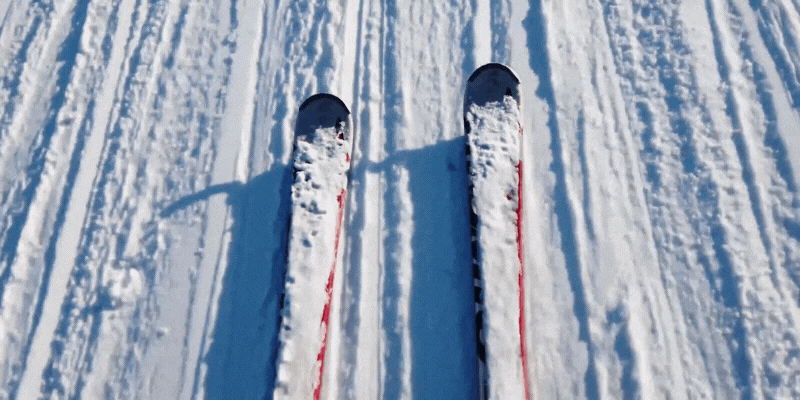
When you first start skiing, it is almost inevitable that you will learn first how to snow plow down the bunny hill. The snow plow, the pizza, or wedge turn is almost always the first introduction new skiers have in the sport.
The wedge turn is great for learning to make turns to control your speed, and will successfully get you from top to bottom. However, when you want to venture into bigger, steeper, more varied terrain, you are going to need to move beyond the wedge.
Becoming an intermediate skier means moving from green circles to blue squares, and moving from wedge turns into wedge christies and eventually parallel turns. Once you can confidently ski with parallel turns, you can move into carving, mogul skiing and more!
What is the difference between wedge turns and parallel turns?
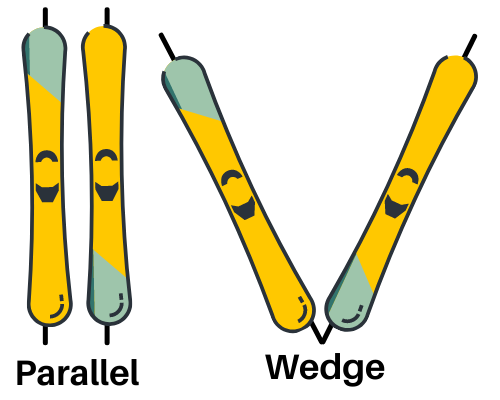
In a wedge turn, your skis are arranged in the shape of a pizza slice, with the tips close together and the ends far apart. The turn is executed by shifting your weight from one ski to the other, and there is a lot of skidding involved to round the turn.
In a parallel turn, your skis are parallel to each other. The turn is still executed by shifting your weight between the skis, but you are also engaging the edge of the ski and utilizing the radius of the ski to make your turns. This lets you have more control while skiing, ski faster, and be more adaptable to varied terrain.
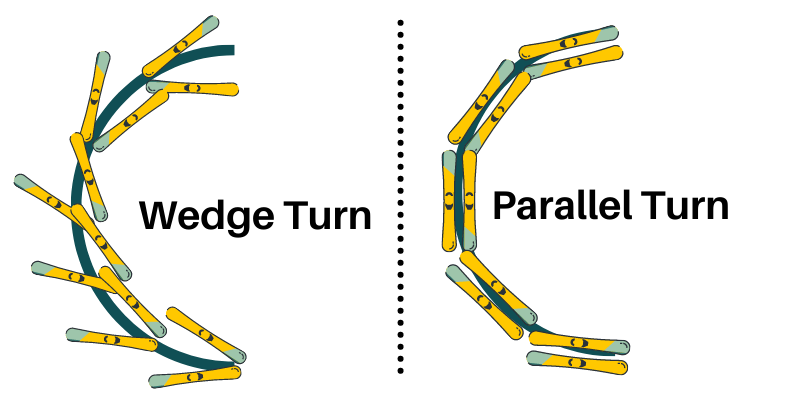
There are a lot of exercises to help you transition from wedge to parallel turns, as it is one of the fundamental transitions to becoming a high level skier.
Wedge Christie Turns
A Wedge Christie turn is a middle ground between a wedge turn and a parallel turn. In a Wedge Christie turn, you are still in a wedge for most of the turn. You make the turn in a wedge, but shift into a parallel position as you finish the turn.
You start your next turn in a parallel position as well, and transition to the wedge for the rounded part of the turn. This YouTube video shows a great demo of Wedge Christie turns.
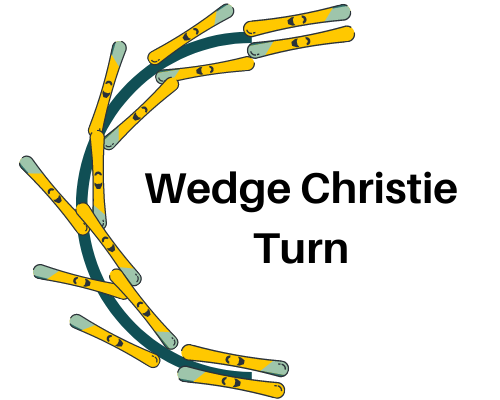
As you improve in doing Wedge Christie turns, try to spend less and less time in a wedge while you round your turns. Try to start your turn with your skis still parallel and keep them that way for as long as possible. Also, try to switch back to parallel earlier and earlier in your turn.
Eventually, you will only be in a wedge for a second or two during your turn, and can work on phasing out the wedge entirely.
While doing Wedge Christies, make sure to focus on keeping your weight forwards– you should feel your shins on the front of your boots. Also, keep your arms out in front of you and avoid having your hands in your pockets. Your arm position affects your overall stance, and if your arms are back, in all likelihood, so is your center of gravity.
Stomp Turns
In this exercise, you are focusing on the initiation of the turn, and doing your best to remain parallel while starting and finishing your turn. To do a stomp turn, you do a big stomp with what will become your outside leg right as you are turning down the fall line.
After you stomp, try to keep most of your body weight on that outside ski as you round your turn. When you are doing wedge turns, pushing down with your outside ski is most of how you turn, and this remains true for parallel turns.
This exercise will help you work on your balance on skis, as well as maintaining pressure on your outside ski as you turn, which will eventually be even more important when you learn to carve.
Hands on Your Knees
This exercise will help you get used to getting low to the ground during your turn, and rising up as you finish the turn.
When you start your turn (or cross the fall line), put your hands on your knees, and keep them there as you round your turn. After finishing your turn, rise back up to your normal skiing stance, and then place your hands back on your knees as you start the next turn.
You should feel the front of your shins against your boots as you do this, and try to notice your skis and how they engage their edges as you start and finish your turns. Try experimenting with leaning onto your edges as you begin your turns, and having a flat ski in between your turns.
Doing this exercise will also help you practice staying in the front seat while you ski and work on your overall balance. It can also help you prevent A-framing, which is when your inside knee falls in and touches your outside knee, creating an A-frame. Here is a good YouTube video with a demo of this exercise.
Baby Steps
Start skiing as normal, but while skiing, make little baby steps across the hill and while you are turning. You can’t go into a wedge if you are stepping, so this exercise really forces you to stay parallel.
I would recommend starting out with this exercise on very easy terrain, and work yourself up to slightly steeper slopes as you get more confident.
This exercise forces you to stay in the front seat too, as you will find it very hard to maintain constant stepping through your turns if you are not in the front seat. Make sure to focus on keeping your ankles flexed, and feeling your shin against the front of your boot.
This drill can also make skiing a bit more strenuous as you are adding a constant movement, so it can be a good way to help get your blood pumping a little extra on cold days!
Shuffle Turns
This exercise is somewhat similar to the baby steps exercise. Instead of making baby steps, shuffle your feet (a little bit!) forwards and backwards while turning. Still focus on your posture, and feeling your shins against the front of your boots as you turn.
This exercise also forces you to stay parallel and in the front seat. It is essentially a simple variation of the baby steps exercise.
Another variation on baby steps is bunny hops. Instead of stepping or shuffling, do little hops up and down as you turn. This is a bit more challenging and cardio-intensive than shuffling of stepping!
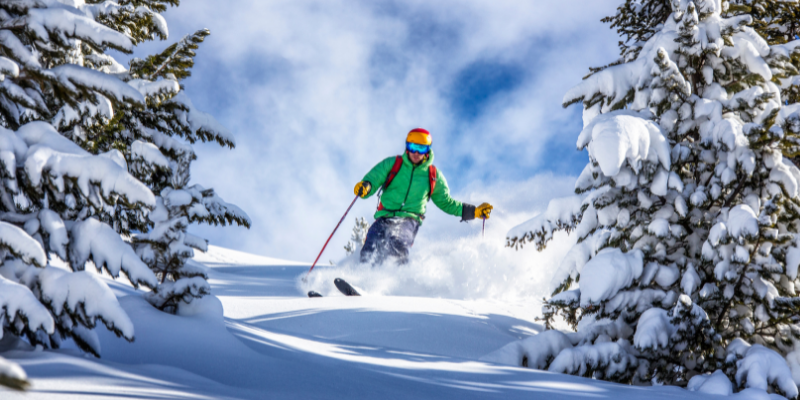
Have fun out there! Remember to focus on your posture while doing any of these exercises. As always, practice makes progress! The more you ski, the more comfortable you will become making parallel turns. As you progress making parallel turns, you can start learning to carve, tackling new terrain, and exploring more of the mountain!